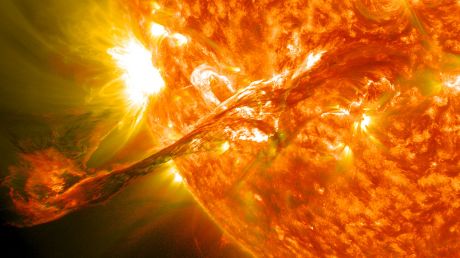An EU-funded initiative is bringing together the European research institutions, infrastructures (telescopes), and data repositories with the aim of helping the solar physics community prepare for operation of the European Solar Telescope (EST).
The project
SOLARNET
(High-resolution solar physics network) was initiated to ensure that all
European solar physicists have access to state-of-the-art facilities
and data repositories, as well as to carry out joint research aiming at
developing tools and prototypes for data innovative instruments and data
processing and access.
Networking activities, access to first-class infrastructures and joint research and development activities are being covered under SOLARNET to improve, in quantity and quality, the service provided by this European community.
Networking activities are aimed at fostering a culture of cooperation for research on solar Physics and other astrophysical topics, and at forming the new generation of solar researchers.
Solar physics is dependent on high-end technology, and robust partnerships with industry are essential to confront engineering challenges of existing and next-generation telescopes. Networking activities within SOLARNET are, therefore, also focused on reinforcing partnerships with the high-technology industry through the exchange of knowledge.
The Transnational Access and Service programme includes the most advanced and largest first class infrastructures – telescopes GREGOR, THEMIS, VTT and SST installed on the Canary Islands – and the instruments IBIS and ROSA installed at Dunn Solar Observatory in the USA, as well as access to the most demanded European Science Data Centres for high-resolution ground-based solar Physics.
EU funding provides SOLARNET members with the means needed for joint research and development actions to improve the quality of Europe's existing solar physics infrastructures.
SOLARNET members have also identified on-going and planned solar physics research programmes for which interested parties could provide enabling technologies. Prototype integral field units and accurate narrow-band filter control mechanisms are being developed to validate concepts for EST instrumentation.
All these activities bring together European solar physicists to ensure the participation of the widest possible community for this revolutionary ground-based telescope. When it becomes a reality, this 4-metre ground-based EST will allow a better understanding of the magnetic coupling between the Sun's photosphere and chromosphere.

